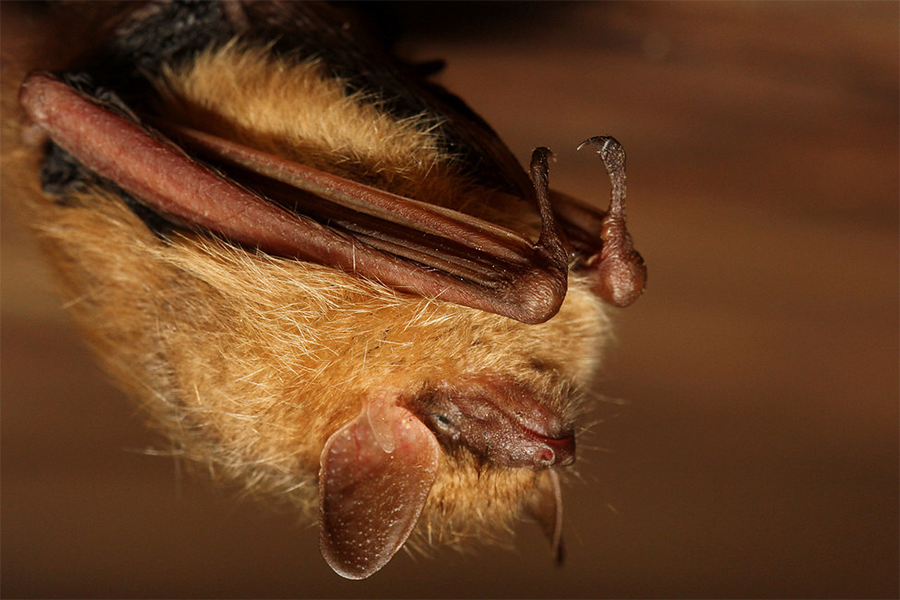Going Batty for Bridges
By Julien Devereux
AUSTIN—A new study looks into how and why bats make Texas bridges and roads their home, and how TxDOT can support our winged friends.

If you’ve ever visited downtown Austin on a summer evening, you’ve probably noticed one of the city’s most popular live acts: the million or so Mexican free-tailed bats that emerge at sundown from their roosts under the Congress Avenue Bridge to begin their nightly hunt for gnats, mosquitos and other flying insects.
The bridge wasn’t built with bat accommodations in mind, but it has made an excellent summer home for them nevertheless.
And, it turns out, Austin’s famous bridge isn’t the only one in Texas providing lodging for these flying mammals. So TxDOT conducted a survey to find out which bridges and culverts are hosting bats, and how future infrastructure can be designed to help bat populations flourish.
“A few years ago we conducted a survey of infrastructure in West Texas to see what bat species are using our infrastructure—bridges and culverts etc.—and why bats are using them, if they have any special features that make them attractive to bats,” said Matt Buckingham, a former biologist at TxDOT. “It really helps us to minimize impact to bats when we’re working on bridges. And now when we design bridges, we can even ask ourselves if there’s anything we can do to attract them?”
Building bat-friendly infrastructure is not just good for the winged creatures. It’s also good financial planning for TxDOT, and good for the entire natural world surrounding TxDOT bridges and culverts.
A primary concern is the tricolored bat, which has been proposed for listing under the Endangered Species Act. If that happens, it could change the way TxDOT works in areas that have habitats for that bat.
“Building good infrastructure for them now saves us from having to spend money to alter infrastructure in the future, if that happens,” Buckingham said. “We generally treat this species as if it’s already listed to avoid potential project interruptions.”
Buckingham said tricolored bats seem to favor culverts over bridges, so in 2024 TxDOT began surveying more than 900 culverts in East Texas to guide how the agency works on these structures.
“We’re also looking into how we can provide benefit to the bats through making sure we have a good mix of native plants on our right of way near our bridges and culverts,” Buckingham said. “Tricolored and most other Texas bats eat insects, and insects often gather where native plants are, so we’re looking at the issue not only from designing culverts where bats can roost, but how they use our right of way. The hope is that the results of that study can be used to improve nearby habitat for bats.”
The surveys will continue into 2025, after which TxDOT—and wildlife biologists—will have a better idea of Texas’ bat populations, where they’re living in TxDOT infrastructure and how they’re surviving the threat of a disease called white nose syndrome. This fungal disease has led to the loss of 70% of the bat’s population in some states, and the surveys will also test the structures for this deadly disease.
“Knowing what kinds of structures bats like to use allows us to really try to build a bridge or culvert that’s bat-friendly,” Buckingham said. “It’s one of the ways TxDOT can further our understanding of this threatened species, and help them while still getting Texans from one place to another.”





